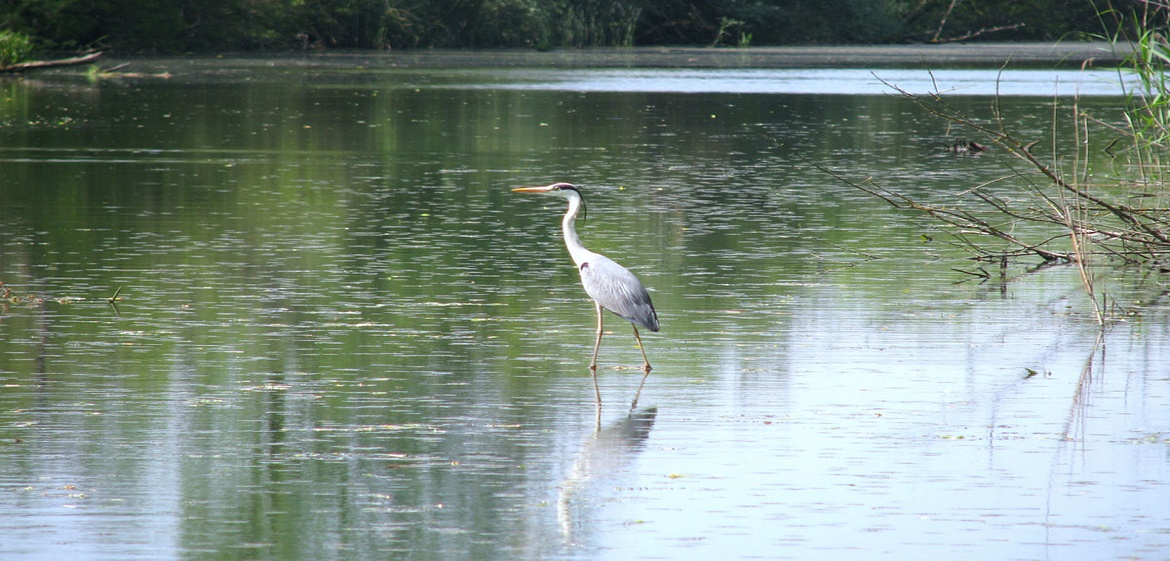The area of Lake Rusanda is around 75 km from Belgrade, the capital of Serbia. Lake Rusanda is a highly saline, shallow wetland in the Vojvodina region of Northern Serbia. The Vršac mountains, another site that included in this program, is around 85 km from Belgrade, the capital of Serbia, and around 90 km from Lake Rusanda. Deliblato Sands is a unique wilderness comprising 33,000 hectares of grasslands, farmlands and mixed forest lying on a large sandy region. It is famed for its great number of species unique to the area, including many plants and insects.
Day 1 – Belgrade – Zrenjanin – Ečka
After arriving in Belgrade we will head to Zrenjanin. Later we will enjoy dinner and overnight stay at a hotel in Ečka.
Day 2 – Kikinda, Rusanda and environs
We will be watching some great birds including Red-footed Falcon, Common Kestrel, Barn, Long-eared and Little Owls. Overnight stay in Ečka.
Day 3 – Rusanda and environs
We will be wathing more Red-footed Falcons, Common Kestrels, Barn, Long-eared and Little Owl splus migrant Wood Warblers. Overnight stay in Ečka.
Day 4 – Zrenjanin – Vršac, Tamiš
We will take a look at Vrsac and visit the Tamiš Wetlands and Fishponds. Thereafter, dinner and overnight stay in Vršac.
Day 5 – Vršac
We spend the whole day exploring Vršac Hills plus get involved in ringing owls andraptors. Overnight stay in Vršac.
Day 6 – Vršac
The whole day will be spent on the Deliblato Sands looking for raptors. Overnight stay in Vršac.
Day 7 – Deliblato Sands
Another day spent on the Deliblato Sands looking for migrants and raptors. Overnight stay in Vršac.
Day 8 – Vršac – Belgrade
After breakfast we will depart to Belgrade
Site 1 (Important Bird Area)
Lake Rusanda is a highly saline, shallow wetland in the Vojvodina region of Northern Serbia. Beside the well know nature reserve Slano Kopovo, this lake is one of the last remaining natron lakes in Serbia and is probably the saltiestin the whole of Pannonian plains. Lake Rusanda is C-shaped and is surrounded by pastureand agricultural landwhile in the centre of the ellipse are orchards and vineyards with cottages. The lake itself isalkaline nearly 4.5 km long by 300-400 m wide and quite shallow beinga maximum of 60 cm at its deepest points. On the northeasternbank there is a large reed-bed up to 100 mwide whilst the rest of the lake, especially southern andwestern shores, have muddy shallow banks. A total of 210 bird species have beenfound in and around the site. The lake itself is anoutstanding migratory stopover site for dozens of species including grebes, ducks, geese, cranes, waders and gulls.
Nearby, the adjoining local park holds one of the largestand densest breeding populations of Common Kestrel, Red-footed Falcon and Long-eared Owl in Serbia. Important breeding bird species include Black-necked Grebe, Night and Squacco Herons, Avocet, Black-winged Stilt and Redshank. Around Rusanda there are several good localities withRedfooted Falcon colonies, clutches of Common Kestreland Long-eared Owl breeding pairs, plus Barn and Little Owl breeding sites. As well as Rusanda, we will also visit Kikinda, a town betterknown as The World Owl Capital. Its urban townsquare holds up to 750 Long-eared Owls in winter roosts.
Site 2 (Important Bird Area)
The wetlands and carp fishponds around Tamis River are one of the finest birding spots in a whole of Serbia. They consist of vast areas ofnatural and artificial ponds, marshes, wet meadows and riverine forests scattered around a slow flowing Tamis river. Birds include: Cetti’s Warbler, White-tailed Eagle, Ferruginous Duck, Night Heron, Squacco Heron, White-tailed Eagle, Avocet, Black-winged Stilt, Black and Whiskered Tern.
Site 3 (Important Bird Area, Nature Reserve)
The Vrsac Hills are situated about 25km northeast from the Deliblato Sands. They are arch-shaped hills covered by the mixed oak, beech, hornbeam and lime woodlands, vineyards and extensive farmland. Birds include: Goshawk, Sparrowhawk, Lesser Spotted Eagle, Short-toed Eagle, Ural, Tawny, Little, Scops and Long-eared Owl, Syrian Woodpecker and Black Redstart.
Site 4 (Important Bird Area, Nature Reserve)
The Deliblato Sands is a unique wilderness comprising 33,000 hectares of grassland, farmland and mixed forest. It is alarge sandy region bordered by the Danube, Tamis and Karas rivers and is home to a rich variety of flora and fauna. It’s famed for its high degree of endemism including many unique plants and insects. The Danube sandbanks host the largest Central European Sand Martinbreeding colony with up to 18,000 pairs! It is also possible to find Susliks, European Polecats, Marbled Polecats and at least three packs of Grey Wolves. Birds include: White-tailed, Imperial, Short-toed and Booted Eagle, Black Kite, Goshawk, Long-legged Buzzard, Hobby, Saker Falcon, Little and Scops Owl, Nightjar, Hoopoe, Bee-eater, Roller, Wryneck, Crested Lark, Sand Martin, Tawny Pipit, Barred Warbler, Red-backed Shrike, Lesser Grey Shrike, Golden Oriole and Ortolan Bunting.
Price includes:
– Transfer according the program
– Accommodation in Kaštel Ečka for 3 nights (1 half board and 2 bed and breakfast) and in 3* hotel in Vršac (1 half board and 3 bed and breakfast)
– 5 x dinners in local restaurant
– Guide during the tour
Price doesn’t include:
– Flight to/from Belgrade
– Drinks during the meals
– Other meals not mentioned in the program






Get Social